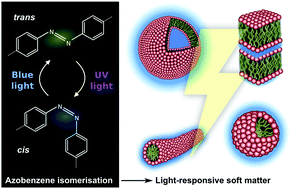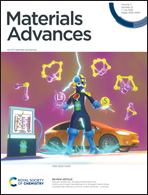Azobenzene isomerization in condensed matter: lessons for the design of efficient light-responsive soft-matter systems
Abstract
Azobenzene-based materials have found applications in a wide variety of systems as a convenient method to induce photo-responsive behaviour through facile trans (E) to cis (Z) isomerization. Of particular interest are condensed matter systems, for which diverse assemblies have been applied in myriad ways to produce optical materials, controllable assemblies and functional surfaces. However, isomerization of azobenzene faces unique challenges in condensed systems when compared with dilute states (molecular solution and gas phase) where isomerization is best understood. In the present work, we explore recent studies looking at these challenges experienced in condensed matter phases, some solutions proposed to improve isomerization efficiency, and further give these issues wider context for the future development of light-responsive soft-matter systems.

- This article is part of the themed collection: Editor’s Choice: Advances and New Avenues in Liquid Crystal Science


 Please wait while we load your content...
Please wait while we load your content...